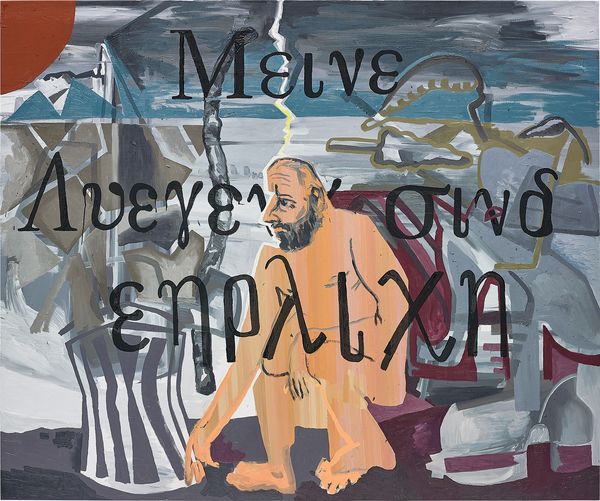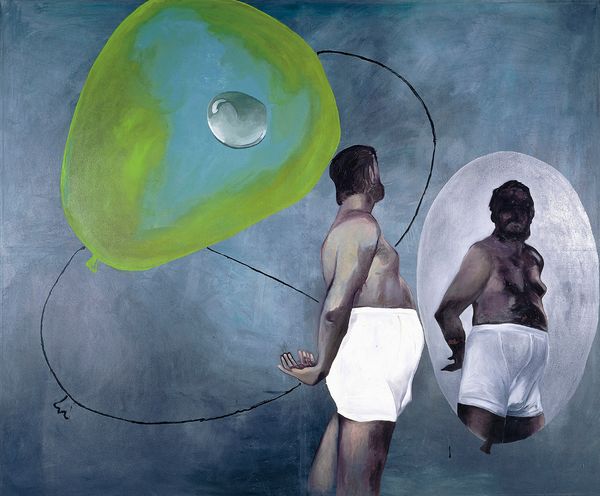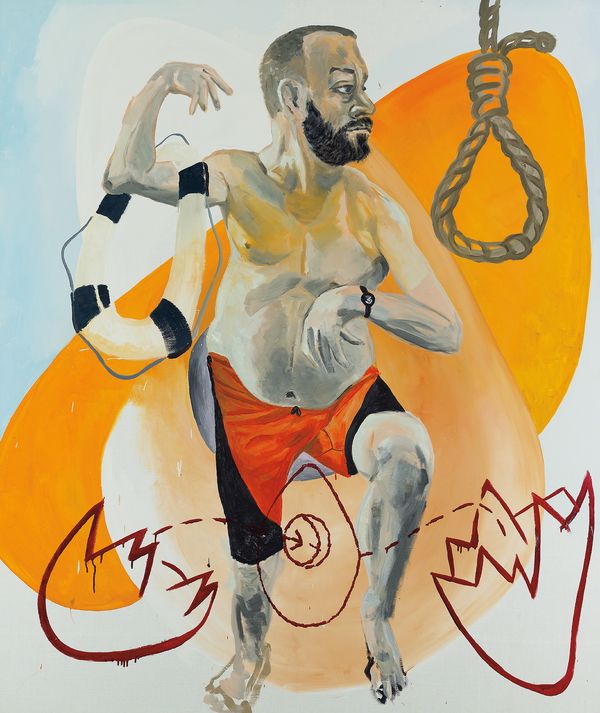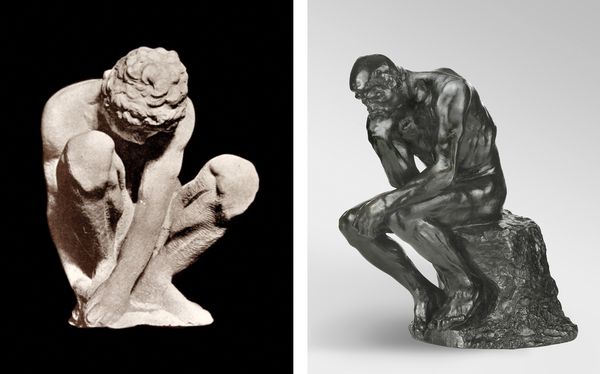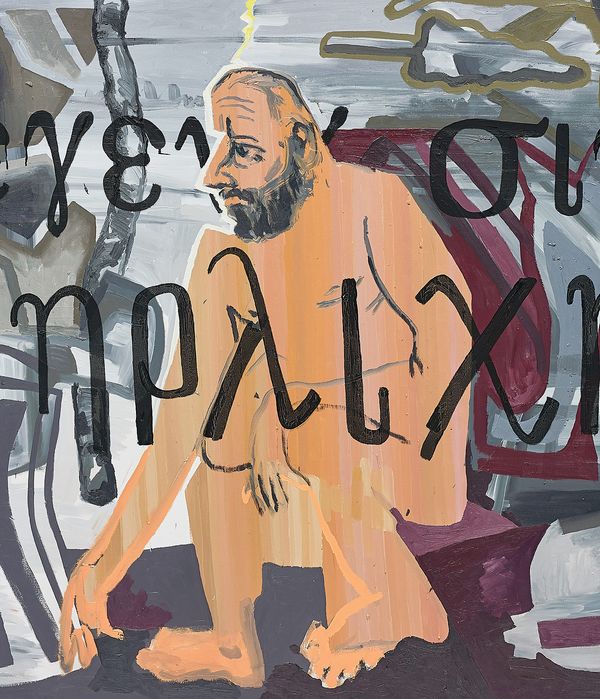Martin Kippenberger Ohne Titel (Meine Lügen sind ehrliche), 1992
Exuding Martin Kippenberger's distinct eccentricity and raw energy, Ohne Titel (Meine Lügen sind ehrliche) highlights the multifarious questions that define the artist's self-portraits. Painted alongside his second major cycle of self-portraits, during his time split between the Greek island of Syros and his Frankfurt studio, this work from our London 20th Century & Contemporary Art Evening Sale in London was executed in 1992.
Moving on from his momentous Picasso self-portraits of 1988, Ohne Titel (Meine Lügen sind ehrliche) delves further into the artist's psyche whilst presenting his body with unbridled honesty. Other works from the series are held in eminent collections, including the Centre Pompidou, Paris, the Setagaya Art Museum, Tokyo, The Flick Collection, Berlin, as well as the personal collections of Christopher Wool and Richard Prince.
I realized that not having a style is also a style, and then I pursued this style.
— Martin Kippenberger
Above from top: Martin Kippenberger Ohne Titel (aus der Serie Selbstportraits),1988, Kravis Collection; Ohne Titel (aus der Serie Hand Painted Pictures), 1992, Centre Georges Pompidou, Paris. © Estate of Martin Kippenberger, Galerie Gisela Capitain, Cologne.
Inundated with detail, this self-portrait keeps with Kippenberger's portrayal of himself as a candid and pensive subject. Captivated yet simultaneously disenchanted by the ideal of the Romantic genius, Kippenberger's preoccupation with self-presentation derisively challenges tropes of the artistic ego. From the heraldic poses of his early self-portraits to the vulnerable figures of his ultimate self-incarnation in Ohne Titel (aus der Serie das Floß der Medusa), Kippenberger questions iconic art historical frameworks and deceives the established norms of portraiture in order to elevate the status of the sitter—namely through the use of serialization.
Spanning the entirety of his career, the artist's intensive periods of self-portraiture can be assigned to four crucial years: Lieber Maler male Mir (Dear Painter Paint for Me) in 1981; the remarkable Picasso Portraits of 1988; the Hand Painted Pictures borne while the artist was on Syros; and his final coda and epic homage to Théodore Géricault’s The Raft of the Medusa from 1996. In the present work, the artist plays on the traditional and established principle of authorship. Through the listless form of a nude Olympian, the artist portrays himself in a theatrically troubled contortion. His exaggerated cramped pose conjures the contemplative stature of Auguste Rodin's The Thinker or Michelangelo's Crouching Boy.
From left: Michelangelo Crouching Boy, 1530, Hermitage Museum. Auguste Rodin The Thinker, 1880-81, cast in 1924, Philadelphia Museum of Art. Bridgeman Images.
Conversely, Kippenberger's naked and kneeling figure echoes the coiled position of the Android T-800 in the futuristic Terminator films, 1984 and 1991. In a 1998 exhibition catalogue for Kunsthalle Basel, Daniel Baumann likened his figure to "a naked thin legged Olympian sprinter, an excellent dancer and...a melancholic posed between a lifebelt and gallows: Kippenberger as a clown between performance and despair."
[In the] 1992 self-portraits...The poses are ridiculous, theatrically contorted and full of an exaggerated tension.
— Daniel Baumann
When this work was painted, the infamy of Kippenberger's lore was at its height and the artist had withdrawn to Syros, removing himself from the art world. During a lengthy stay with friend Michael Würthle (proprietor of the Paris Bar in Berlin), away from the debauchery of Cologne, Kippenberger produced Ohne Titel (Meine Lügen sind ehrliche)—a self-portrait that gives deeper insight into his fraught, vulnerable, yet determined state.
In keeping with the influence of mythology on the artist, a lightning bolt strikes the artist's profile, coming down from the heavens and evoking at once Elysium, the ultimate resting place for the souls of the virtuous in Greek mythos. Crucial to Kippenberger's practice lie notions of continuity and change, often embodied by the concept of reincarnation and the recurring motif of the egg. In Ohne Titel (Meine Lügen sind ehrliche), the artist brings his conscious dismissal of an established style and continuous quest to reinvent himself to the fore, asserting that "an artist who opposes himself still has the best chances to reach some result." Replete with skewed, sardonically assumed classical tropes and references to contemporary culture (the bearded Socratic aesthete, the broken column and the silhouette of the android), this painting is a continuation of the artist's playful vernacular.
Other works from the series are held in...the personal collections of Christopher Wool and Richard Prince.
An electrifying reckoning from the master of self-presentation and pictorial manipulation, Ohne Titel (Meine Lügen sind ehrliche) is simultaneously comical and sombre, earnest and destabilised, underscoring the inseparable bond between ego, life and art for Kippenberger.
